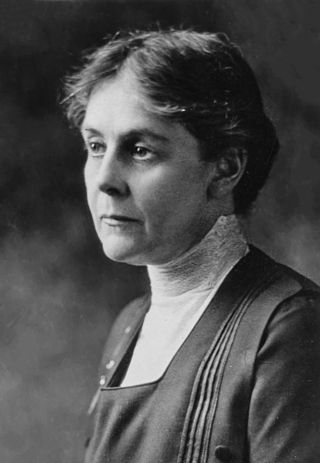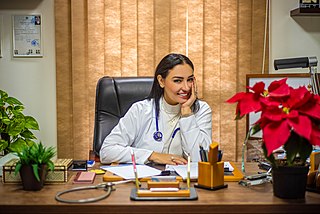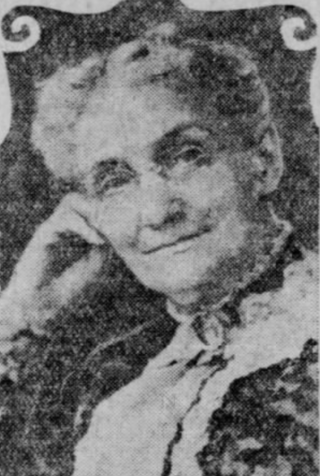
Dorothea Lynde Dix was an American advocate on behalf of the indigent mentally ill who, through a vigorous and sustained program of lobbying state legislatures and the United States Congress, created the first generation of American mental asylums. During the Civil War, she served as a Superintendent of Army Nurses.

Mary Ann Bickerdyke, also known as Mother Bickerdyke, was a hospital administrator for Union soldiers during the American Civil War and a lifelong advocate for veterans. She was responsible for establishing 300 field hospitals during the war and served as a lawyer assisting veterans and their families with obtaining pensions after the war.

Mary Edwards Walker, commonly referred to as Dr. Mary Walker, was an American abolitionist, prohibitionist, prisoner of war in the American Civil War, and surgeon. She is the only woman to receive the Medal of Honor.

Alice Hamilton was an American physician, research scientist, and author. She was a leading expert in the field of occupational health, laid the foundation for health and safety protections, and a pioneer in the field of industrial toxicology.

Emily Blackwell was a trailblazer in the 19th century, making numerous contributions in the field of medicine and women's rights. Emily was the second woman to earn a medical degree at what is now Case Western Reserve University, after Nancy Talbot Clark. In 1993, she was inducted into the National Women's Hall of Fame. Emily made major advancements in the medical scene, assisting in the start of the New York Infirmary for Indigent Women and Children and creating the Women's Central Association of Relief. Emily, along with her sister Elizabeth Blackwell, had established the Women's Medical College in New York City. Shortly after, Emily helped form the London School of Medicine for Women.

Harriot Kezia Hunt was an American physician and women's rights activist. She spoke at the first National Women's Rights Conventions, held in 1850 in Worcester, Massachusetts.

Margaret Jessie Chung, born in Santa Barbara, California, was the first known American-born Chinese female physician. After graduating from the University of Southern California Medical School in 1916 and completing her internship and residency in Illinois, she established one of the first Western medical clinics in San Francisco's Chinatown in the early 1920s.

The presence of women in medicine, particularly in the practicing fields of surgery and as physicians, has been traced to the earliest of history. Women have historically had lower participation levels in medical fields compared to men with occupancy rates varying by race, socioeconomic status, and geography.
During the American Civil War, sexual behavior, gender roles, and attitudes were affected by the conflict, especially by the absence of menfolk at home and the emergence of new roles for women such as nursing. The advent of photography and easier media distribution, for example, allowed for greater access to sexual material for the common soldier.

The state of medical knowledge at the time of the Civil War was quite limited by 21st century standards. Doctors did not understand germs, and did little to prevent infection. It was a time before antiseptics, and a time when there was no attempt to maintain sterility during surgery. No antibiotics were available, and minor wounds could easily become infected, and hence fatal. While the typical soldier was at risk of being hit by rifle or artillery fire, he faced an even greater risk of dying from disease.

Margaret Dorothea Craighill was an American psychiatrist. She was born in Southport, North Carolina, the daughter of Colonel William E. Craighill and Mrs. Mary Craighill. Craighill was a third generation officer following in the footsteps of her grandfather, Brigadier General William Price Craighill, and her father. Both men graduated from the United States Military Academy, commonly referred to as West Point, in West Point, New York. On May 28, 1943, she became the first woman commissioned officer in the United States Army Medical Corps. Major Craighill served through World War II and afterward worked with the Veterans Administration. She died on July 20, 1977, aged 78, in Southbury, Connecticut.

Nancy Maria Hill was an American Civil War nurse who later became one of the first women physicians in the United States. She specialized in obstetrics and founded what is now called Hillcrest Family Services, an organization providing support to single mothers and their children in Dubuque, Iowa.

The history of nursing in the United States focuses on the professionalization of Nursing in the United States since the Civil War.

Sakaye Shigekawa was an American physician who specialized in obstetrics. Born to Japanese-American parents, she was imprisoned and forced to live and work at an internment camp in California, providing medical care to fellow Japanese-American internees during World War II. She completed her training in Chicago before returning to Los Angeles in 1948, where she practiced for more than 50 years.
Mercy Ruggles Bisbee Jackson, M.D. was an American physician. She was one of the first women to earn a Doctor of Medicine degree, specifically in obstetrics and gynecology.

Rosalie Slaughter Morton was an American physician, surgeon, and author. In addition to running her own medical practices, she became the first woman appointed as Attending Surgeon at the College of Physicians and Surgeons at Columbia University in 1916, and became the first chairperson of the American Women's Hospitals Service the following year. Morton served as a medic during the First World War, and was the first chair of the Public Health Education Committee. She was also one of the first women to join the faculty, and to later become a professor, at the Polyclinic Hospital of New York.

Mary Ellen Lawson Dabbs was a Texas physician, women's rights activist and writer. Dabbs was an advocate of women's suffrage and of the temperance movement. She was an officer in the Texas Equal Rights Association (TERA). Dabbs also believed that African American women deserved the right to vote in the same manner as white women.

C. Annette Buckel was an American physician and the first female medical doctor in Oakland, California. Buckel worked to improve the welfare of women and children through her medical practice as well as her activism. During the Civil War, she appointed and supervised nurses in addition to nursing in the field.

Harriet Amelia Judd Sartain was an American homeopathic physician who practiced in Philadelphia. She was one of the first three women admitted to the American Institute of Homeopathy in 1871.
Hettie Kersey Painter was an American physician who served as a nurse in the American Civil War, organizing the first Union army hospital south of the Potomac River. She graduated from Penn Medical University in 1860. Later in life, she owned and operated a clinic in Lincoln, Nebraska.
















